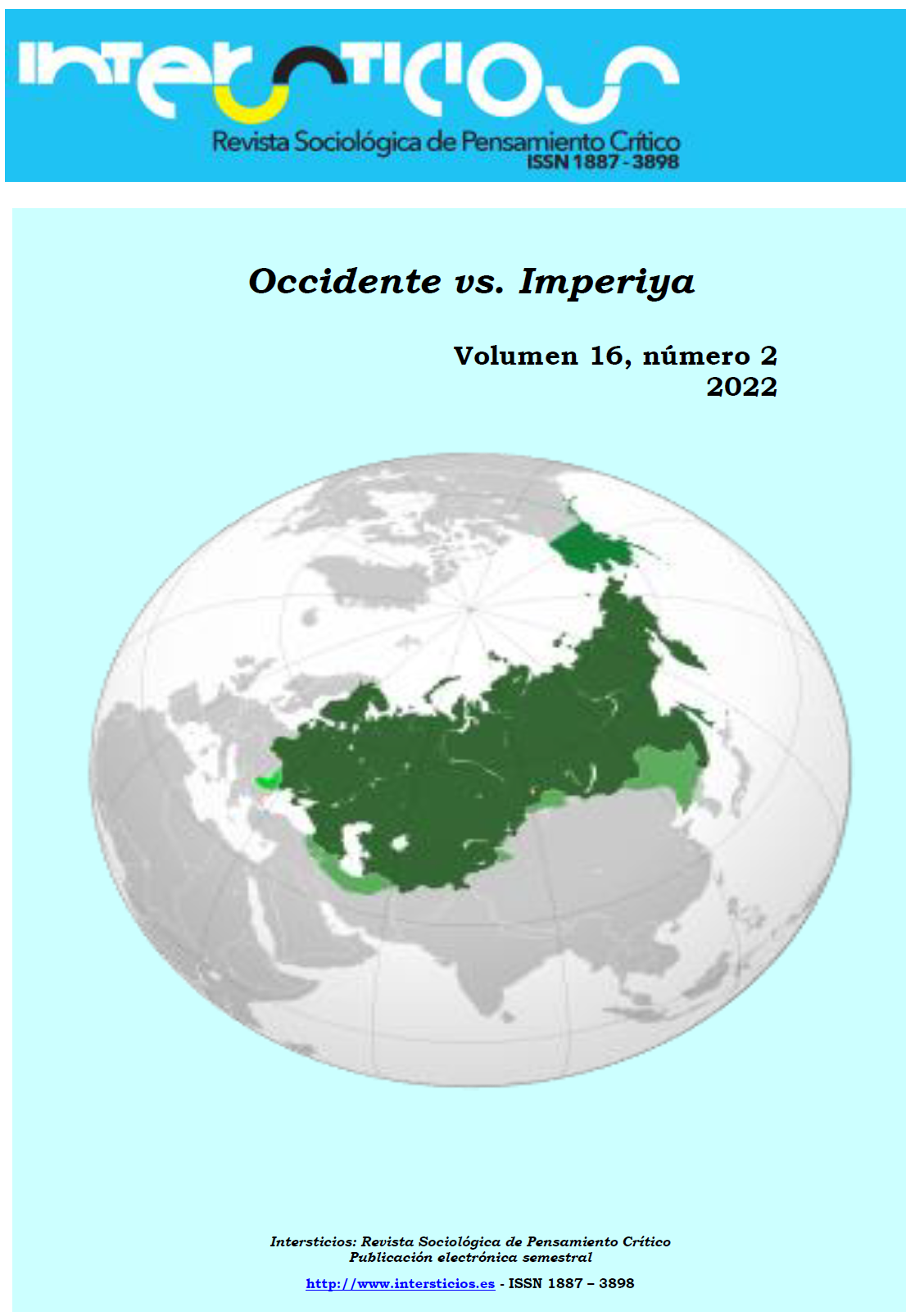Raising awareness about the refuge: campaigns and serious games
Keywords:
Education, refugees, asylum, comunication, video games, experienceAbstract
The objective of this article is to analyze the way in which organizations linked to asylum and refuge develop new strategies through which to sensitize the population on the subject, with the point of attention focused on personal stories and the experience of refugees. To do this, three audiovisual campaigns, a video game and two mobile applications designed by ACNUR to raise awareness about the reality of refugees are analyzed. The methodology used is of a qualitative nature, analyzing the content and the method by which the experiences lived by refugees and applicants for international protection are communicated to all citizens. This work arises from a broader investigation that allows contextualizing the phenomenon, a previous step that structures the specific theoretical framework of the article in which the communication exercise of humanitarian organizations is discussed, to then enter the campaigns themselves. Next, a video game and two applications are analyzed, in order to reach a dialogue between playfulness and communication/awareness. The main results point to the proliferation of serious games as a strategy to approach the younger audience, illustrating the shift in the communication strategy of organizations, where value is placed on experience as a tool to create empathy. By way of conclusion, the importance of adapting the contents to the public and to the variations of the phenomenon of asylum and refuge is highlighted, without losing sight of the use of the theme by companies far from the interest of raising awareness and educating.
References
Abril, G. (2010): “Cultura visual y espacio público-político”, CIC Cuadernos de Información y Comunicación, 15, pp. 21-36. Recuperado en: https://revistas.ucm.es/index.php/CIYC/article/view/CIYC1010110021A/7198 [Revisado: 30/05/2022].
Abril, G. (2012): “Tres dimensiones del texto y de la cultura visual”, IC – Revista Científica de Información y Comunicación, 9, pp. 15-35. Recuperado en: http://institucional.us.es/revistas/comunicacion/9/art_1.pdf [Revisado: 30/05/2022].
ACNUR, (2020): Global Appeal 2020-2021, Ginebra, ACNUR.
Arteta, A. (1996): La compasión. Apología de una virtud bajo sospecha, Barcelona, Paidós.
Baudrillard, J. (1996): El crimen perfecto, Barcelona, Anagrama.
Baudrillard, J. (2003): Power inferno, Madrid, Arena libros.
Bauman, Z. (2013): Vidas desperdiciadas. La modernidad y sus parias, Barcelona, Paidós.
Brauman, R. y Backmann, R. (1996): Les médias et l’humanitaire. Éthique de l’information ou charité-s`pectacle, París, CFPJ.
Boltanski, L. (1999): Distant suffering: morality, media and politics, Cambridge, Cambridge University Press
Chouliaraki, L. (2006): The spectatorship of suffering, Londres, SAGE Publications.
Chouliaraki, L. (2010a): “Ordinary witnessing in post-television news: Towards a new moral imagination”, Critical Discourse Studies, 7(3), pp. 305-19. Recuperado en: https://www.tandfonline.com/doi/abs/10.1080/17405904.2010.511839 [Revisado: 30/05/2022].
Chouliaraki, L. (2010b): “Post-humanitarianism: humanitarian communication beyond a politics of pity”, International Journal of Cultural Studies, 13 (2), pp. 107-126. Recuperado en: https://journals.sagepub.com/doi/10.1177/1367877909356720 [Revisado: 30/05/2022].
Chouliaraki, L. (2013): The ironic spectator. Solidarity in the age of Post-Humanitarianism, Cambridge, Polity Press.
Chouliaraki, L. y Zaborowski, R. (2017): “Voice and community in the refugee crisis: A Content Analysis of news coverage in Eight European Countries”, International Communication Gazette, 79 (6-7), pp. 613-635. Recuperado en: https://journals.sagepub.com/doi/10.1177/1748048517727173 [Revisado: 30/05/2022].
Fassin, D. (2016): La razón humanitaria. Una historia moral del tiempo presente, Buenos Aires, Prometeo.
García Orta, M. J. (2002): “Mecanismos básicos de la propaganda de guerra en los medios informativos. El ejemplo de Kosovo”, ÁMBITOS, 7-8 (2), pp. 137-149. Recuperado en: https://core.ac.uk/download/pdf/157763183.pdf [Revisado: 30/05/2022].
Gervais, T. (2015): La fabrique de l’information visuelle: Photographies et magazines d’actualité, Paris, Textuel.
Giraldo, Y. N. y Ruiz Silva, A. (2015): “La solidaridad. El lenguaje de la
sensibilidad moral”, Revista Colombiana de Educación, 68, pp. 311-334. Recuperado en: https://revistas.pedagogica.edu.co/index.php/RCE/article/view/3050/2733 [Revisado: 30/05/2022].
Hariman, R. y Lucaites, J. L. (2007): No Caption Needed. Iconic Photographs, Public culture and Liberal Democracy, Chicago, University of Chicago Press.
Moeller, S. (1999): Compassion Fatigue: How the Media Sell Disease, Famine, War and Death, London and New York, Routledge.
Redfield, P. y Bornstein, E. (2011): Forces of compassion: Humanitarianism between Etics and Politics, Santa Fe, School for Advanced Research Press.
Rodríguez Centeno, J. C. (2002): “Comunicación en tiempos de guerra. Aproximación teórica a los mensajes y los medios”, Comunicación: revista Internacional de Comunicación Audiovisual, Publicidad y Estudios Culturales, 1, pp. 117-130. Recuperado en: https://idus.us.es/handle/11441/12990 [Revisado: 30/05/2022].
Rorty, R. (2001): Contingencia, ironía y solidaridad, Barcelona, Paidós.
Ruiz-Estramil, I. B. (2018): “A la espera. Los solicitantes de asilo en el Estado español”, Revista Nómadas, 55 (2), pp. 1-16. Disponible en: https://www.theoria.eu/nomadas/55.2018.2/ivanaruizestramil.pdf [Revisado: 30/05/2022].
Ruiz-Estramil, I. B. (2021): “Devenir refugiado en el procedimiento de asilo español. De la articulación humanitaria a la experiencia del demandante”, [Tesis de Doctorado, Universidad Pública de Navarra]. Disponible en: https://academica-e.unavarra.es/handle/2454/40989 [Revisado: 30/05/2022].
Ruiz-Estramil, I. B. (2022): “El Sistema Europeo Común de Asilo: entre la protección de los derechos humanos y la integración europea”, Revista de Estudios Europeos, 80, pp. 71-97. Disponible en: https://revistas.uva.es/index.php/ree/article/download/6461/4676/15708 [Revisado: 30/05/2022].
Sacramento, O., Silva P. G. y Challinor, E. (2020): Quest for refuge: Reception responses from the Global North, Ribeirão. Edições Húmus.
Sontag, S. (2003): Ante el dolor de los demás, Madrid, Alfaguara.









